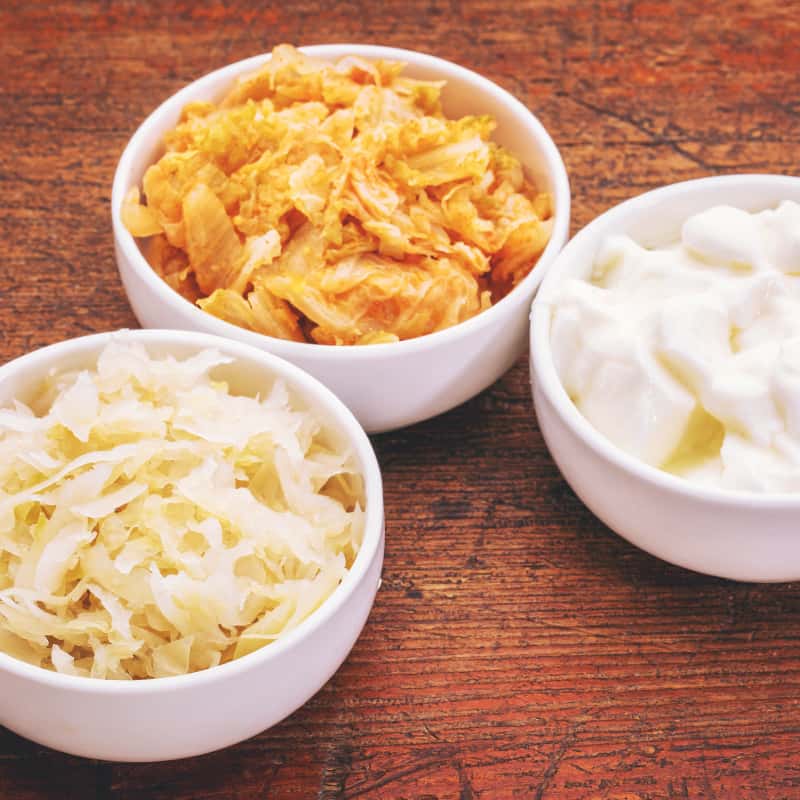Let's study a little more about candida before learning what foods to eat to treat it. A microscopic fungus or yeast called "Candida albicans," which is frequently found in the mouth, colon, and skin causes the mycosis or illness known as "Candida" (candidiasis).
Candida fungi proliferate and cause the infection known as candidiasis or moniliasis when the immune system is weakened by diabetes, prolonged antibiotic therapy, cancer, or other conditions. It impacts the mouth, the anus, the vagina, or other places of the skin where moisture or friction is present (for example, the groin, the axillae, or under the breasts).
It is very beneficial to follow a candida diet regimen that strengthens the immune system and balances the intestinal bacterial flora since these factors encourage the treatment of candidiasis.
Top Candida Foods to Eat
1. Yogurt:
Biotic yogurt is one of the best candida foods to eat because it contains live bacterial cultures typically found in the intestine, forming part of the intestinal flora. These bacteria prevent the excessive proliferation of other microorganisms, such as yeasts in the digestive tract. Thus, it is said that yogurt balances and regulates intestinal flora. Its consumption fights oral, intestinal, and anal candida. Good results have been achieved in vaginal candidiasis by introducing it into the vagina. Biotic yogurt is amongst the top foods to eat to get rid of yeast infections.
2. Garlic:
Garlic needs to be on every candida diet meal plan because it inhibits many microorganisms’ proliferation, among them the fungus that causes candida. This effect is due to its sulfurated essence, which diffuses readily throughout the body’s tissues. It also balances the intestinal flora and stimulates natural immunity.
3. Folates:
Folate deficiency encourages candidiasis and other mycoses. Legumes, wheat germ, and green leafy vegetables are good sources of folates.
4. Iron:
It has been shown that iron deficiency is associated with many candida cases, which may be an aggravating factor. Legumes, molasses, soy and its derivatives, sesame, and spinach are good plant-based sources of iron, whose absorption is facilitated by the simultaneous consumption of vitamin C or foods containing it.
LEARN MORE:12 Natural Ways to Treat a Fungal Infection: How to Treat Fungal Infections
Foods to Avoid With Candida
Sugars: Yeasts feed primarily on sugars. Too Much Sugar use encourages their development, as does diabetes. Sugar consumption should be avoided, along with sugar-containing foods. Brown sugar, maple sugar, and other types of sugars are also detrimental.
Alcoholic Beverages: Alcohol depresses the immune system (lowers resistance). Besides, all alcoholic beverages, mainly wine and beer, contain residues of the yeast with which they have been made. These yeast residues may facilitate candidiasis in sensitive individuals.
Chocolate: Chocolate should be avoided because it contains sugar, which advances the yeasts’ development that causes candidiasis. It is also rich in fat, which negatively affects the immune system.
Brewer’s yeast: Although it is not the same type of yeast that causes candidiasis, it is suspected that it may promote this disease in sensitive individuals.
Cured cheeses: Many kinds of cheese are prepared with fungi similar to the yeast that cause candidiasis; thus, they should be avoided.
Bread: There is a hypothesis that products containing yeast may favor infection by microscopic fungi that cause candida in sensitive individuals. Bread is made with yeast, and it should be avoided.
What bread can I eat on a candida diet?
The majority of candida diet programs permit the use of sourdough bread. However, be aware that most grocery store sourdough slices of bread could contain some yeast. Hence, it is advised that you locate a trustworthy supplier of your sourdough bread that guarantees they prepare it properly, ideally one that is organic.








.jpg)




